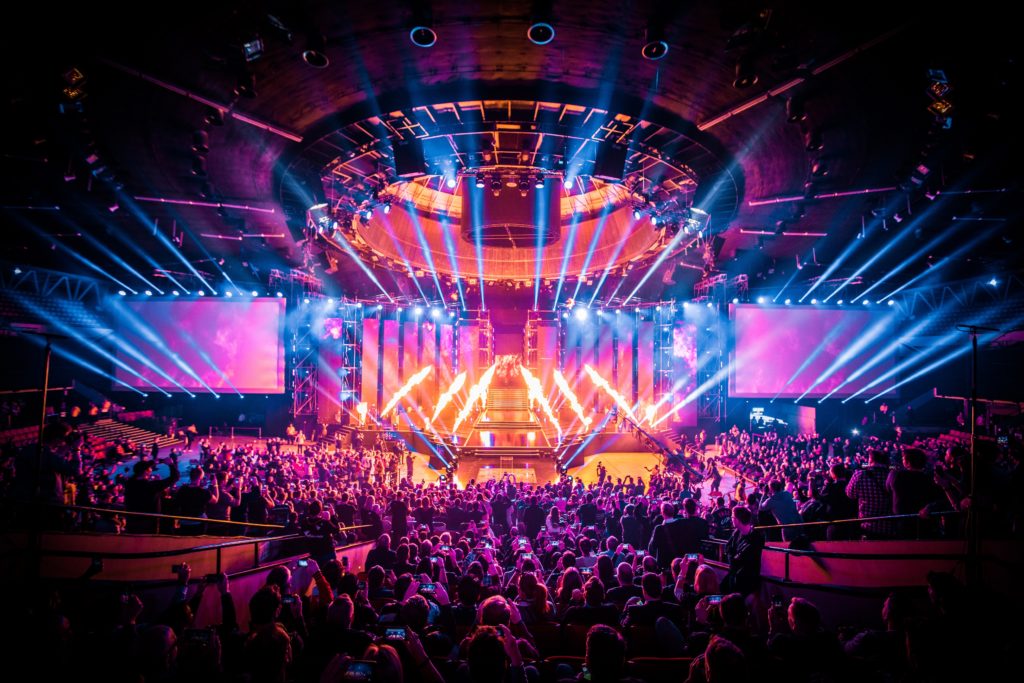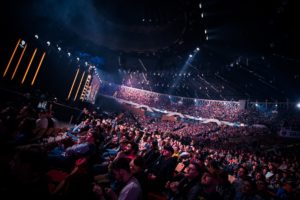The healthiest relationships take time to build, where those involved are far from afraid to try new ideas and take risks while relying on one another with a fair amount of mutual respect and trust.
The latter has been arguably the building blocks of the Intel Extreme Masters success.

In 2001 when ESL and Intel came together they may not have realised that their relationship had the potential to last a lifetime. After six years of getting to know each other, the conjunction of the two power houses gave birth to its adored world wide brain child in the midst of a digital revolution, replenishing an industry to the full, granting it the capability to transform people’s lives.
After over a decade of dedication and nurturing, the time came for Intel and ESL to hold hands and take a leap of faith once more. To return to the birth land of one of IEM’s most influential and impactful teachers. To show off their creation to the locals while teaching it the values and culture of the Polish people of Katowice. The town in Southern Poland, population 297,000, is described as ‘an emerging metropolis. The whole metropolitan area is the 16th most economically powerful city by GDP in the European Union with an output amounting to $114.5 billion.’
It may have come as a surprise for many but esports and the people of Katowice came together as if it was written in the stars. Their esports adoption was instant and the two have been playing happily side by side ever since.

With such approbation from the locals and global reach enabled by the Intel Extreme Masters it didn’t take long for the policy makers to take notice and seek out what part they could play in the growth of esports and its millions of fans around the world.
Katowice is a popular venue for conducting business these days, and with the Expo Centre (Międzynarodowe Centrum Kongresowe) just around the corner, it was only a matter of time before someone would jump at the opportunity and host an event like the IEM Expo.
In between both ESL One and IEM, the city hosted the Global Esports Forum in its Spodek arena and during his opening remarks John Bonini, VP Client Computing Group, General Manager VR, Gaming & Esports, Intel Asked how we could possibly unleash the next billion fans.
Whilst the whole room pondered the problem at hand John Bonini quickly moved on to answer his own question by highlighting the benefits of diversity, faster, smarter infrastructure and education.
He made a point about how both animals and humans play games and learn by doing so.
“The way we interact with games is much about learning and how we learn”
Finding a way to produce fun and engaging education through the power of technology and gaming is certainly something we can all look forward to being a reality, or virtual reality sooner rather than later.
We caught up with John Bonini later in the conference and asked him a few questions:

Esports Insider: With your role in Intel, can you share some insight into your strategy around esports?
John Bonini: My charter is to start figuring out what problems there are that aren’t necessarily about selling chips, and where Intel can add some unique value, either with publishers, leagues, or backend and distribution.
ESI: What are the building blocks to making VR successful in esports?
John: The resolution needs to be higher, faster, and better. The device needs to get lighter, and without a cord too. There has to be a social part, you need to be able to capture the attention of the audience. That’s not the full list but there is a lot to do before VR appears in esports. I don’t think that it will have a very large number in the next 5 years, just like esports didn’t in the early years either. The software the publishers use will need some changes too.
ESI: Who for you are the key enablers in the esports space?
John: Well, working with publishers alongside our software teams, we help them solve their problems, and help the gamers have the best experience as possible. All that on Intel hardware of course, that’s how it all works together. ESL is a big partner to create the tournament capability for the open ecosystem, that’s different than Blizzard and the Overwatch League and MLG, who a more of a closed publisher-lead system.
“We’re all in a grand experiment to see which one is going to dominate over time”
I think they are going to both be there for a while. ESL is a great partner of ours because when a new title comes up, and things get innovated they’re pretty adaptable and quick to respond to some of those trends which Intel likes because gamers get excited by that and it helps sell new hardware. Then we have all of our hardware partners with the likes of HP, Dell, Razer, Lenovo and MSI they’re our true customers to help get the hardware out there.
ESI: What would be a slight change you would like Intel to do in the coming months, how would you mix things up a bit?
John: To go to companies and find out that, as an example, they have a cheating problem, and how we work on a solution that has different business models. I’m interested to look into that whole ecosystem and partnering with them with b2b models that are not necessarily all about selling chips. That’s what I’d like to see change.
ESI: Intel has arguably taken quite a few risks in the last couple of years, exhibit A being Katowice and, then things like PUBG, the VR Challenger League, and so on. Why is that?
John: We pride ourselves in taking risks and we do it for the good of the community. We like to be good stewards and things that don’t work, don’t work, and you move on to the next.

